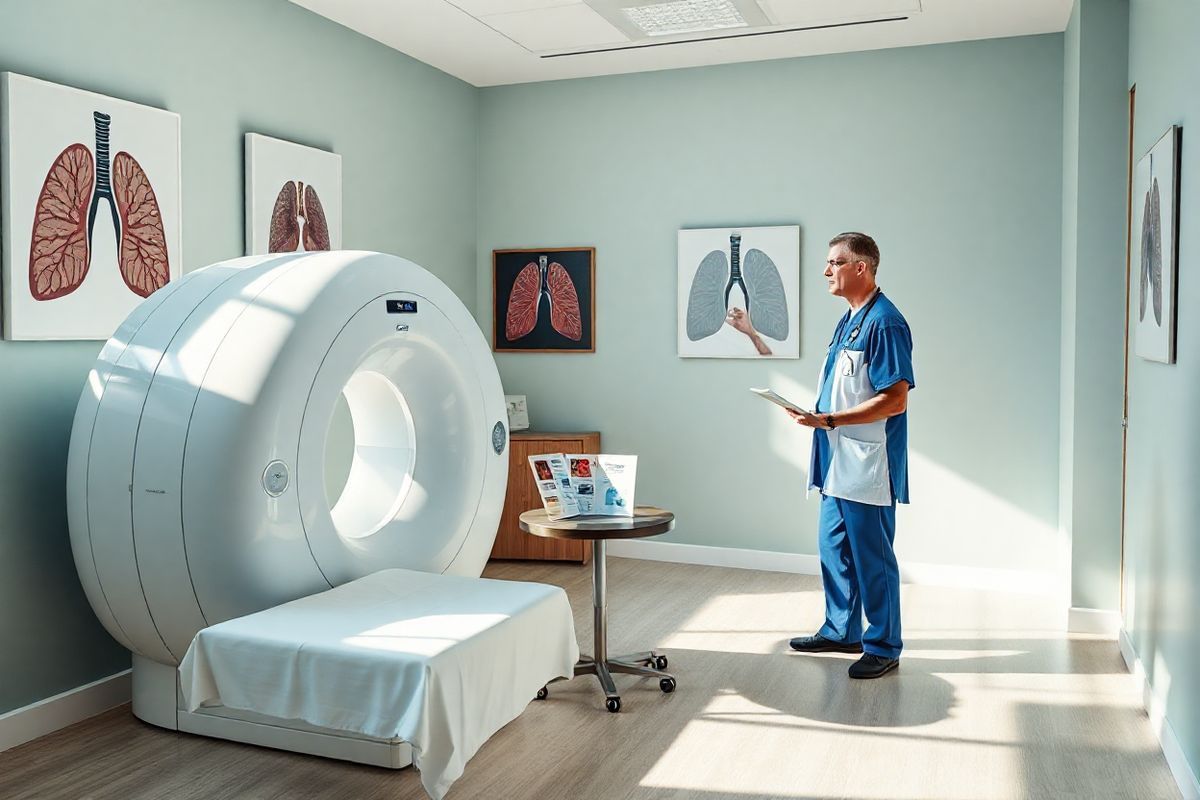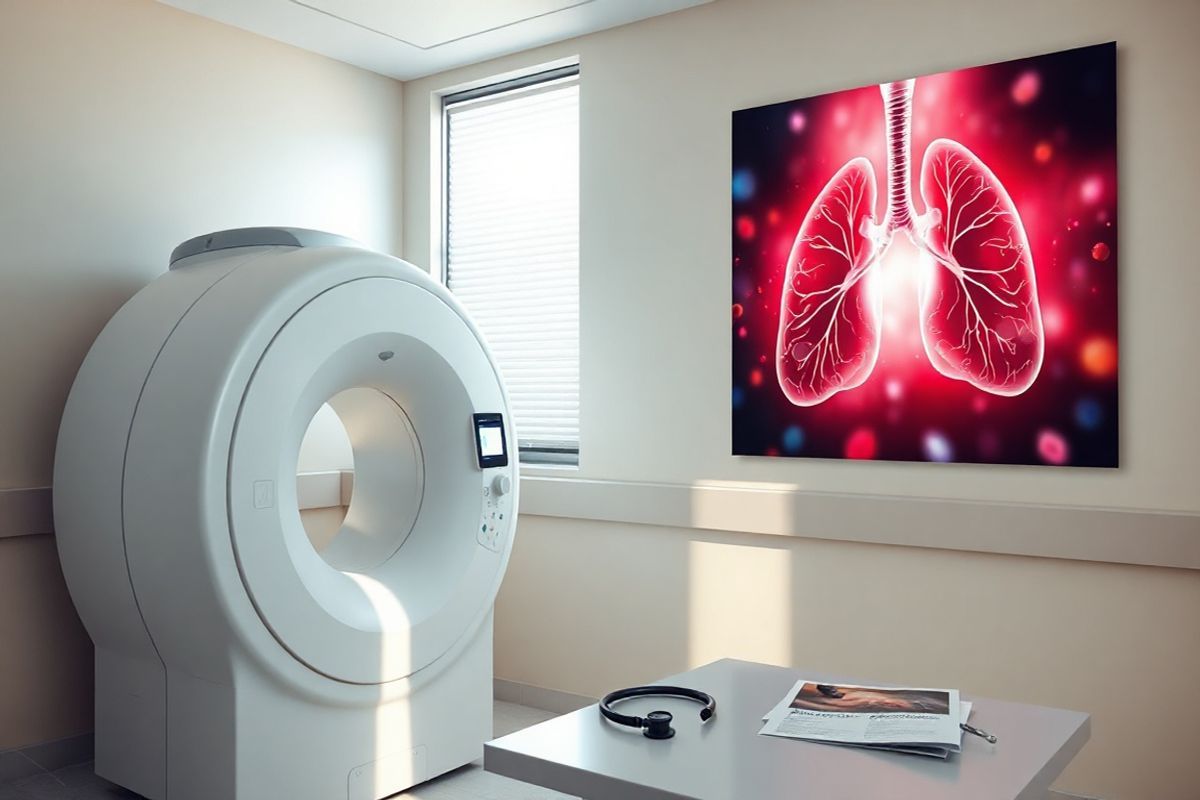Table of Contents
Medicare Coverage: Who Qualifies for Lung Cancer Screening?

medicare provides coverage for lung cancer screening for eligible beneficiaries, making it an essential resource for many individuals over the age of 50. Understanding who qualifies for this coverage is vital for ensuring that those at risk receive timely screenings.
Eligibility Criteria for Medicare Coverage
To qualify for Medicare coverage for lung cancer screening, individuals must meet specific criteria:
- Age: Must be between 50 and 80 years old.
- Smoking History: Must be a current smoker or have quit within the last 15 years.
- Pack-Year History: A minimum smoking history of 20 pack-years.
- Health Status: Must not have any symptoms suggestive of lung cancer, such as unexplained weight loss, cough, or chest pain.
Moreover, Medicare covers one screening per year. Eligible beneficiaries should consult with their healthcare providers to determine if screening is appropriate for them based on their individual health profiles (Medicare.gov, 2023).
Key Criteria for Medicare Coverage of Lung Cancer Screening

The criteria for Medicare coverage of lung cancer screening with LDCT are designed to ensure that only those who stand to benefit from screening are covered. These criteria include:
- Prior Smoking History: Individuals must provide documentation of their smoking history to establish eligibility.
- No Previous Lung Cancer Diagnosis: Individuals with a history of lung cancer are generally not eligible for routine screening if they have been cancer-free for less than five years.
- Medical Necessity: The screening must be deemed medically necessary by a healthcare provider, who will also confirm eligibility based on the aforementioned criteria.
Understanding these key criteria can help patients and healthcare providers navigate the complexities of Medicare coverage for lung cancer screening.
Benefits of Early Detection: How Lung Cancer Screening Saves Lives
The primary goal of lung cancer screening is to identify lung cancer at an early stage, which can lead to more effective treatment options and improved survival rates.
Impact on Mortality Rates
Studies show that lung cancer screening with LDCT significantly reduces mortality rates. The NLST found that screening reduced lung cancer mortality by 20% compared to chest X-ray screening. This reduction is particularly pronounced in high-risk populations, where early detection can lead to interventions such as surgery, radiation therapy, or targeted therapies before the cancer progresses to a more advanced stage (National Cancer Institute, 2023).
Psychological Benefits
The psychological impacts of screening should not be overlooked. Knowing that one is being monitored for lung cancer can alleviate anxiety and stress related to potential undiagnosed disease. Furthermore, early detection provides individuals with the opportunity to make informed decisions about their health, treatment options, and lifestyle modifications to improve overall well-being.
Economic Benefits
From an economic perspective, early detection and treatment of lung cancer can lead to significant cost savings for healthcare systems. Treating early-stage lung cancer is generally less resource-intensive than managing advanced-stage disease, which often involves complex and costly interventions. Thus, promoting screening not only benefits patients but can also reduce financial burdens on healthcare systems (U.S. Preventive Services Task Force, 2021).
Navigating the Process: Steps to Access Medicare Coverage for Lung Cancer Screening
Accessing Medicare coverage for lung cancer screening involves several steps. Understanding this process can help eligible individuals take advantage of the screening benefits available to them.
Step 1: Determine Eligibility
Individuals should first assess their eligibility based on the criteria outlined above. Consulting with healthcare providers can help determine if screening is appropriate.
Step 2: Consult with Healthcare Providers
Patients should schedule an appointment with their healthcare providers to discuss their smoking history, any symptoms they may be experiencing, and the potential benefits and risks of lung cancer screening. A healthcare provider can provide guidance on whether to proceed with screening.
Step 3: Obtain a Referral for Screening
If deemed appropriate by the healthcare provider, patients will receive a referral for a low-dose CT scan. It is essential to ensure that the facility performing the screening is Medicare-approved.
Step 4: Schedule the Screening
Patients should schedule their screening at a facility that offers LDCT. It is vital to confirm that the facility is equipped with the appropriate technology and has experience in performing lung cancer screenings.
Step 5: Follow-Up on Results
After the screening, the results will be analyzed by a radiologist, and patients will receive follow-up communication regarding their findings. If any abnormalities are detected, further diagnostic testing may be required.
Conclusion
Lung cancer screening is a crucial component of preventative healthcare for high-risk individuals. With the support of Medicare coverage, eligible individuals have access to life-saving screening technologies that can significantly enhance their chances of early detection and successful treatment. Understanding the criteria for coverage, the benefits of early detection, and the steps necessary to access screening can empower patients to take proactive measures in managing their health.
Frequently Asked Questions (FAQs)
What is lung cancer screening?
Lung cancer screening is a yearly low-dose CT scan (LDCT) used to detect lung cancer in high-risk individuals before symptoms occur.
Who should get screened for lung cancer?
Individuals aged 50 to 80 years who are current or former smokers with a minimum of 20 pack-years of smoking history should consider screening.
How does Medicare cover lung cancer screening?
Medicare covers one LDCT scan per year for eligible individuals who meet specific criteria related to age, smoking history, and overall health.
What are the benefits of early lung cancer detection?
Early detection can lead to more effective treatment options, significantly reduce mortality rates, and improve overall patient outcomes.
How can I access Medicare coverage for lung cancer screening?
To access coverage, individuals should consult with healthcare providers to determine eligibility, obtain a referral for screening, and schedule the scan at a Medicare-approved facility.
References
-
National Cancer Institute. (2023). Lung Cancer Screening (PDQ®)
-
U.S. Preventive Services Task Force. (2021). Screening for lung cancer: U.S. Preventive Services Task Force recommendation statement. JAMA, 325(10), 962-970. doi:10.1001/jama.2021.1117
-
Medicare.gov. (2023). Your health plan options. Retrieved from https://www.medicare.gov/health-drug-plans/health-plans/your-health-plan-options
-
Medicare.gov. (2023). Parts of Medicare. Retrieved from https://www.medicare.gov/basics/get-started-with-medicare/medicare-basics/parts-of-medicare









